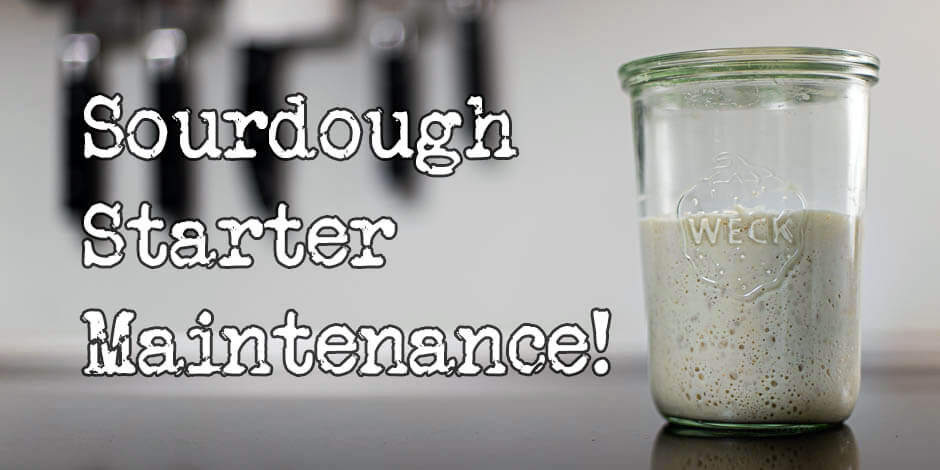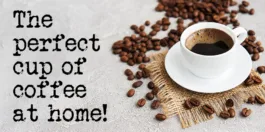After you’ve built an awesome strong sourdough starter, you need to keep it alive. You need to make sure it can grow to double, or even triple the size. That way it will be in great shape to help you bake awesome, delicious sourdough bread. Learn all my secrets to easy sourdough starter maintenance.
If you haven’t built a starter yet, you can go read my guide on how to do just that. It’s not really difficult, all you need is flour, water and patience.
Links for products in this article are ad links. That means if you click through and buy the product I will get a commission. I’ll only link to products that I already own or that are highly rated. The money earned from this commission will be used to run this blog and my youtube channel.
When you’ve built a wonderful and active starter, you may even have given it a name, you want to keep it healthy and in the best condition.
The information in this article is also contained in this video, if you prefer that format:
How do I fit all-day baking into my busy life?
Your sourdough starter maintenance is going to depend on how you live your life and your baking schedule. Fitting sourdough bread baking into a busy life can be a difficult task.
There’s something meditative about baking sourdough bread. I love the quiet work of nursing the dough, stretching and folding it, and shaping it, but I have a full-time job, so I can’t usually bake on a weekday.

I will often bake my no-knead bread. I’ll feed my starter as soon as I come home from work, and I put it in the proofer set to 28°C/82°F. It’s usually tripled by 21:00/9 p.m. I then mix the dough which I leave on the counter to ferment overnight.
I usually get up around 5:00/5 a.m. I will just quickly check the dough and pre-shape it before breakfast and then shape it after my breakfast. I then put it in the fridge until I have time to bake it. Usually the same evening.
What kind of feeding schedule for great sourdough starter maintenance?
Well, that depends on how often you bake.
- If you bake every day, do this:
If you bake every day, it’s super easy. You just keep your starter out of the fridge, somewhere warm, and just feed it every day. - If you bake once a week or less, do this:
What I see most other sourdough bakers recommending is that you refrigerate your starter during the time when you are not using it.
Then the day before you need it you take it out of the fridge and feed it a couple of times so that the dormant yeast can wake up again.
What I do, is a bit different, but is a great option, because your starter will always be ready for action.
So what you do is keep your starter out of the fridge at all times. If your kitchen is on the cold side, you may want to keep it in a proofer set to 28°C/82°F.

Then you just feed it when you need it. I will usually feed it about 4 hours before I need to use it in dough or a levain. I will make 25g-50g more than I need, which I just keep until the next time I need it.
I find it is much easier to keep a super active starter this way. When you put it into the fridge, the yeast goes dormant, and it will need a few feedings to be back in shape.
Keeping your starter out of the fridge will help it stay super active
I’ve even tried to it coming out of the fridge downright sluggish, and suddenly taking the double amount of time to grow, which can really be a pain when you worked out a schedule for your different recipes, that relies on your starter working a certain way.

I’ll leave it up to you to decide what works best for your schedule and your temperament.
If you do decide to go with my “keep it on the counter” routine, I suggest that you backup your starter.
In general, it’s a good idea to keep a backup, if you are unfortunate to kill off your starter by some fluke.
Backing up your starter is a great sourdough starter maintenance practice
One way of keeping such a backup is just to put your active starter in a sealed container in your fridge. It will keep indefinitely.
Another and more permanent way to backup your sourdough starter is to dry it.
Feed your starter and let it grow to its peak. While it’s at its peak, smear some of the sourdough starter on a piece of parchment paper. Smear it really thin.

I find an offset spatula is a great help for this, alternatively, you can use a regular silicone spatula.
Leave it to air dry for about 24 hours (or until completely dry and brittle). Break it up and store it in a plastic bag at room temperature.
How to get back to a regular starter from a dried starter
If worst comes to worst and your active starter and your fridge back up starter fails and you need to restore your dried starter, do the following:
- Weigh your dried starter.
- Add the same amount of water (by weight) to the dried starter.
- Mix until the dried flakes have dissolved. The smaller pieces you made the faster this process will go.
- Then add the double amount (by weight) of flour, and the double amount of water and mix really well.
- Then leave it somewhere warm for 6 hours.
- Hopefully, your starter grew a bit.
- Then commence with a 1:2:2 feeding proportion every time the starter is at its peak until it is sufficiently active. Personally, I like my starter to triple for a maximum rising power.
It’s that simple!
Please share this article on sourdough starter maintenance on social media
This is my article on how you maintain your sourdough starter. I hope you found it helpful and that you learned something.
Please consider sharing this article on social media, so that fellow sourdough bakers can learn about sourdough starter maintenance.











So far I had no idea about back-uping up yiest by drying, amazing tip Sune. Thank you very much
Yes, it’s super practical 🙂 You are welcome 🙂
Hi Sune, I’ve discovered your YT channel and enjoy your experiments re: convention wisdom. I’ve heard that one should feed a starter the same flour and not switch. In this scenario you would have a separate starter to feed with rye, a separate starter to feed with graham flour, etc. It’s just one of those pieces of conventional wisdom that makes things complicated. Any thoughts? – Christine from Lower East side, NYC.
Hello Christine,
I switch the flours on my starter a lot. Usually in the levain though and then I keep the starter using 100% bread flour, but you can easily convert the starter to a different flour or a mix. Even gluten free if you want 🙂
I always see people talk about baking every day or every week. I tend to do in between those 2 – a ;loaf every 3 or 4 days.
I’m new to sourdough, have a new starter that i hope will last. I’m trying to use a no waste method of starter maintenance where feeding happens just when i use the starter
If i bake every 3 days or so, how often do you think i should feed the dough? What’s the longest you think i can go with dough on the counter unfed? It’s a brand new world from me, and my head is spinning from all the information out there – some of it quite contradictory
Also – im not great at planning ahead – busy life and a space brain – what do you think is a working schedule for same day or overnight baking – when to make a le ain, how long to sit, etc…?
Thanks in advance – stay safe – it’s crazy out there
Matthew in New York city
Hi Sune! Thank you for the awesome content you post here and on Youtube!
I have a question regarding starter maintenance. I bake about 2 times a week, sometimes only once on the weekends. I used to refrigerate my starter between bakes, but as you said, the starter became sluggish.
I decided to try storing it on the kitchen counter instead. The first week it was fine, although the started started to smell like alcohol when not fed for a couple of days. Now I left it on the counter for about 4-5 days without feeding it. At first it started to smell a lot like alcohol, and today more like vomit. I decided to discard the entire starter and revive my backup. Would it be better to feed it more frequently? I would like to keep flour waste minimal while preserving a super active starter.
Best regards,
Sebastian
Thank you so much Sune for the instructions. I have a question regarding feeding. I have just received a starter from friends and I’m not sure about quantities. In the 1:2:2 feeding ratio, does the first digit refer to the weight of the starter? And if so, feeding it twice, as you write, means that each time I should take a measured weight of the starter for feeding and throw away the rest?
Love the practicality of keeping it on the counter. To date, I’ve kept mine on the counter but feed twice a day because it’s young and I want keep it stable and healthy (I know, anxious new sourdough mom:). How long have you gone with keeping it on the counter without feeding? At what point have you felt like it failed?
Great source of information, thank you. If you don’t bake every day and keep the starter at room temperature like you suggest, how many times a week do you feed it? Thanks
I don’t feed it unless I need to bake. The longest my starter went on the counter was 3 weeks without a feeding 🙂
Hi, I live in the tropic country where the room temp is about 31 degree C. Will the start survive such temperature if I leave them on the counter top?
When drying the starter, should I cover it so it won’t catch dust or another pathogen?
Is it possible to freeze sourdough bread before baking? How long will it keep well in the freezer?
Your information is so clear and useful, thank you! I’ve been making sourdough for a couple months now thanks to lockdowns, and it’s going fairly well. I’m having fun learning (and eating) I’m wondering if it matters how much I feed a starter. For example if I have 20g of starter can I feed it 500g of flour? What are the benefits or downfalls (if any) of different proportions? Thanks again!
Thank you for all your detailed instructions. A friend recommended your website. I have a jar of dried starter that’s been in the pantry for a few years. I’ve got the sourdough bug again so appreciate your help in reviving a dried starter. I’m eager to try Danish rye!
What I usually to is this:
Hello Sune, I am a fan of Your page! But until now I used to do your recipes with poolish. Now, I am trying unsuccessfully with a levain, bubbly, that doubles in volume but the dough doesn’t grow as expect neither during fermentation nor baking. Can you help me.
What temperature do you bulk at? Also, about how long from you mix the starter into the dough until you shape the bread?